Abstract
Three methods of semiquantitative culture and two techniques of microscopy were compared with a surface viable count for the detection of significant bacteriuria in one thousand midstream specimens of urine. The results obtained with the blotting-paper-strip method on MacConkey agar and with Uricult dip-slides correlated well with the results of the surface viable count, and both methods were suitable for routine use. The blotting-paper-strip method was preferred for laboratory use because of expense but dip-slides are useful for general practice and outpatient clinics. Semi-quantitative culture by Microstix dip-strips gave less accurate results, and the nitrite test area detected only a small proportion of infected specimens. The microscopic examination of a Gram-stained film of the centrifuged deposit of urine specimens yielded more useful information and was more reproducible than examination of a wet film of the untreated urine.
Full text
PDF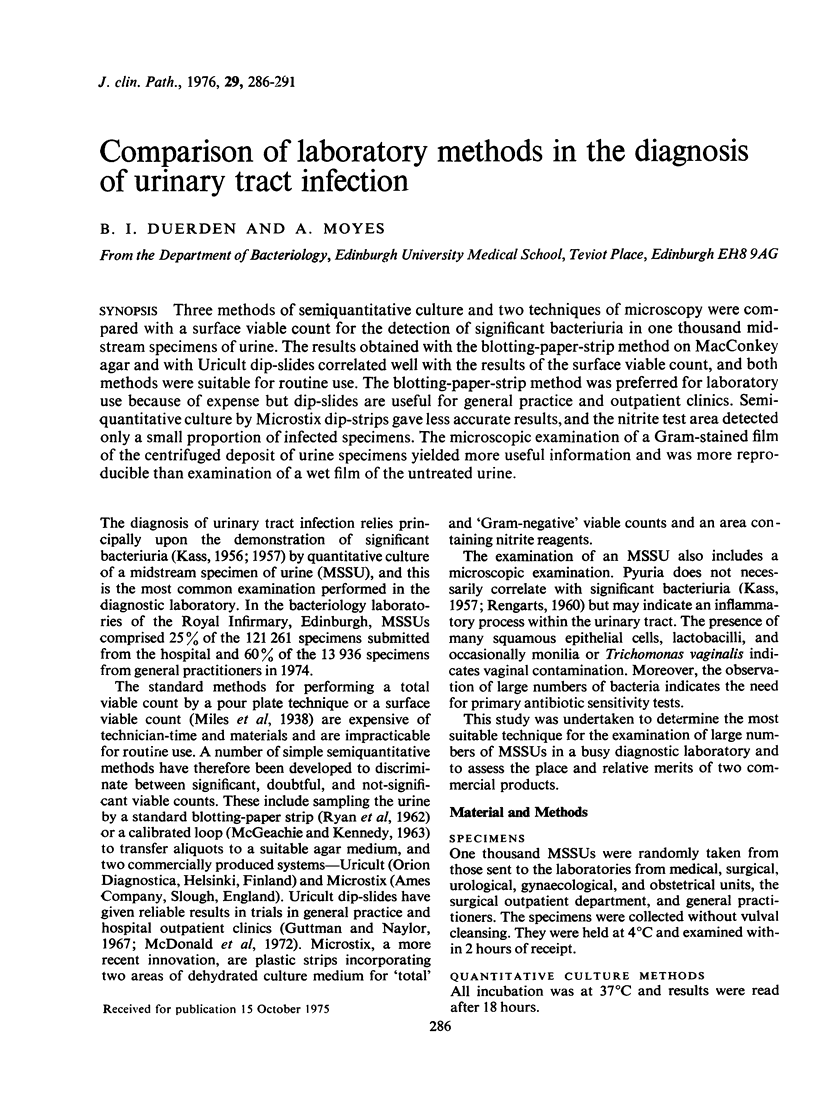
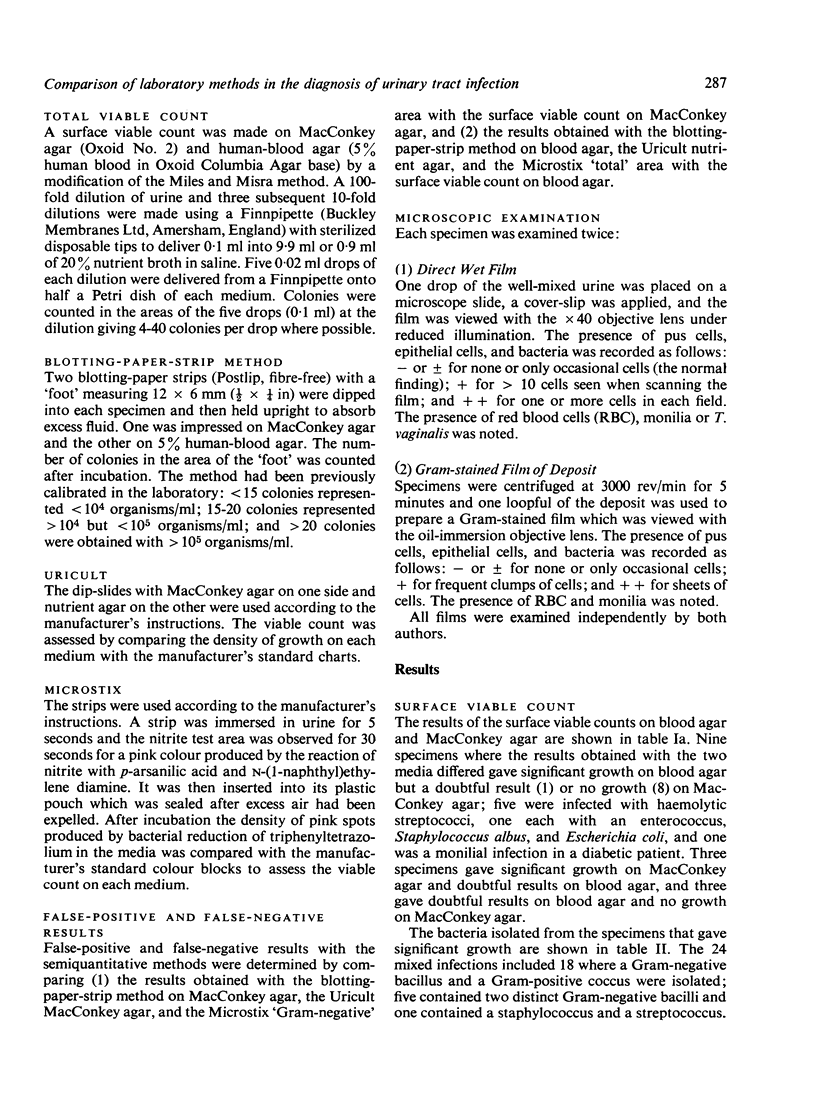
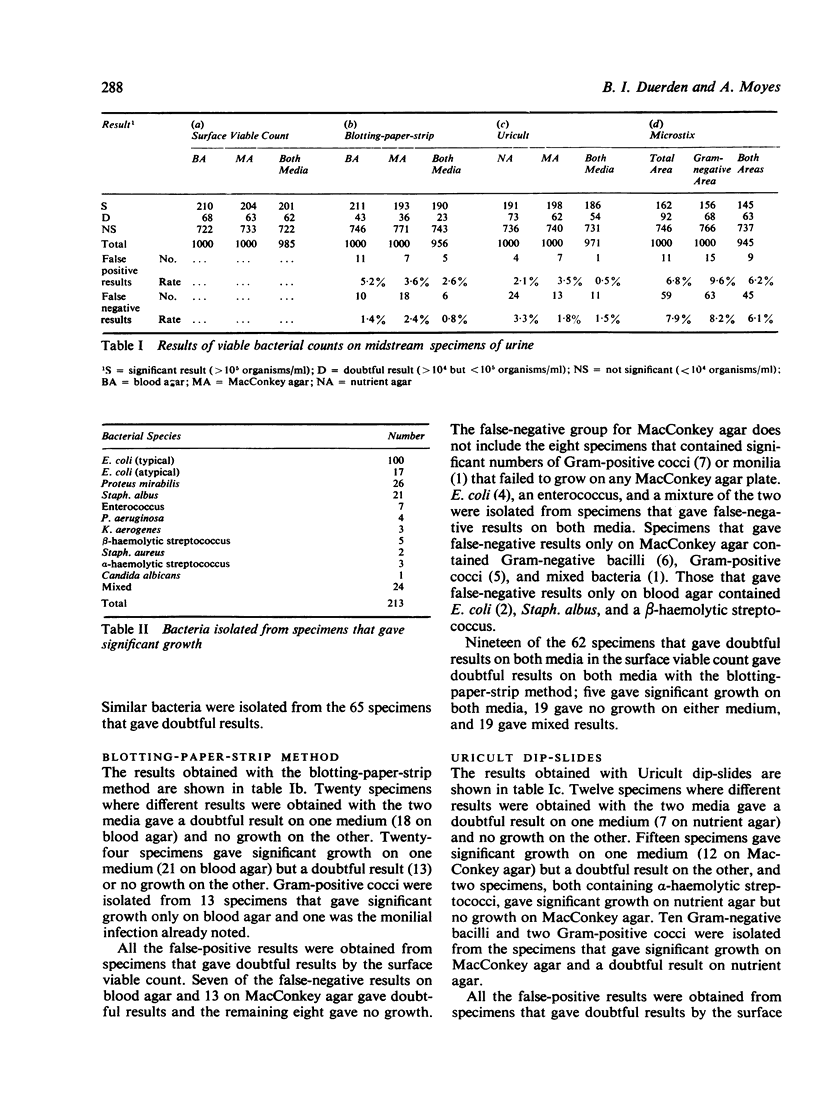
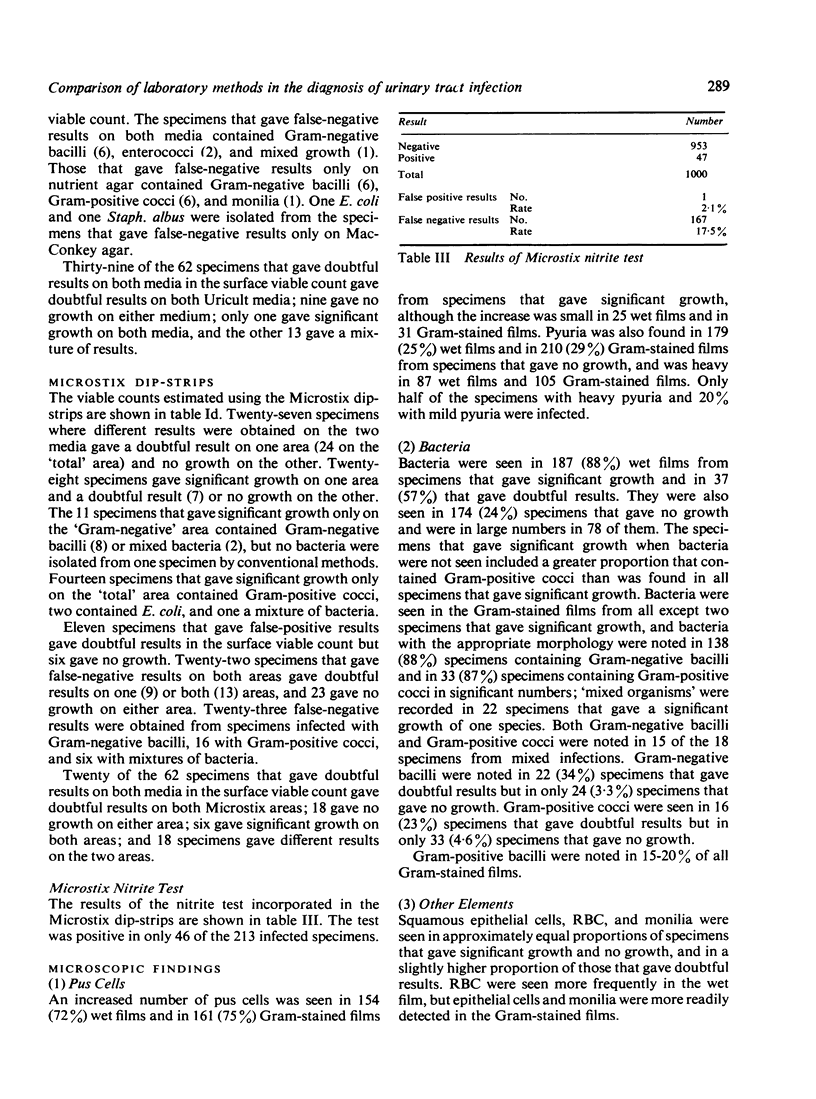
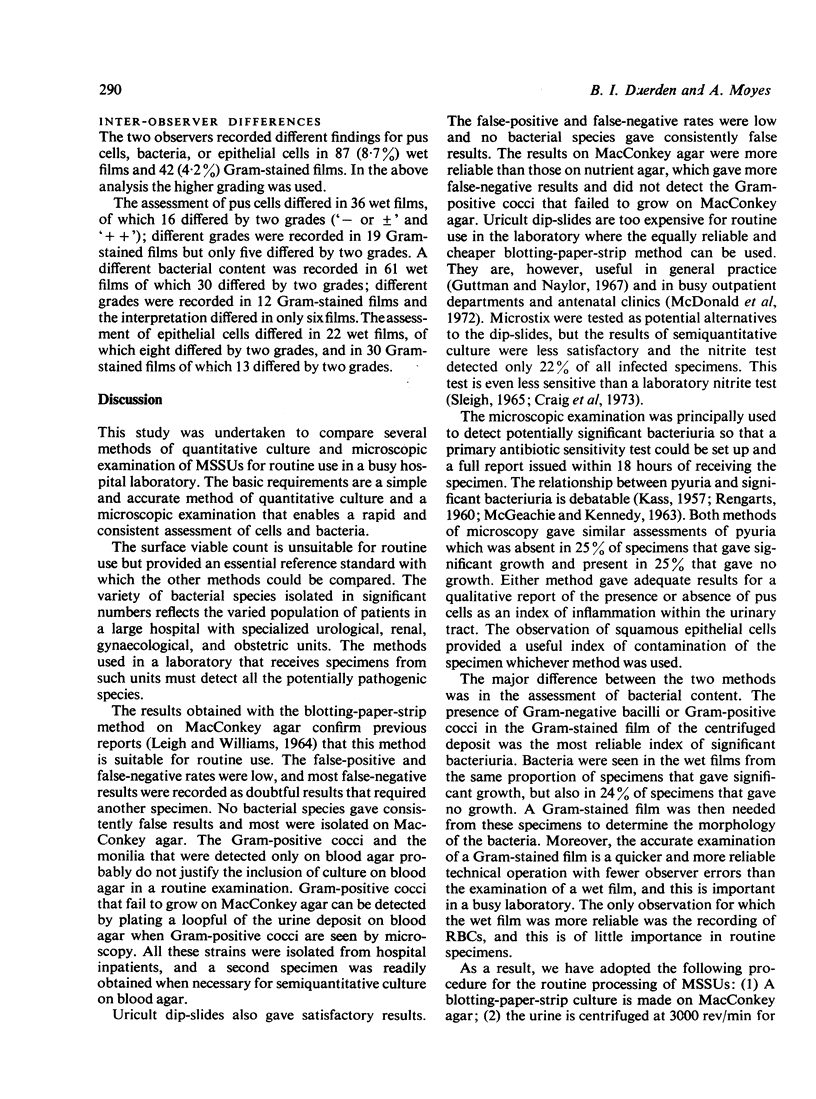
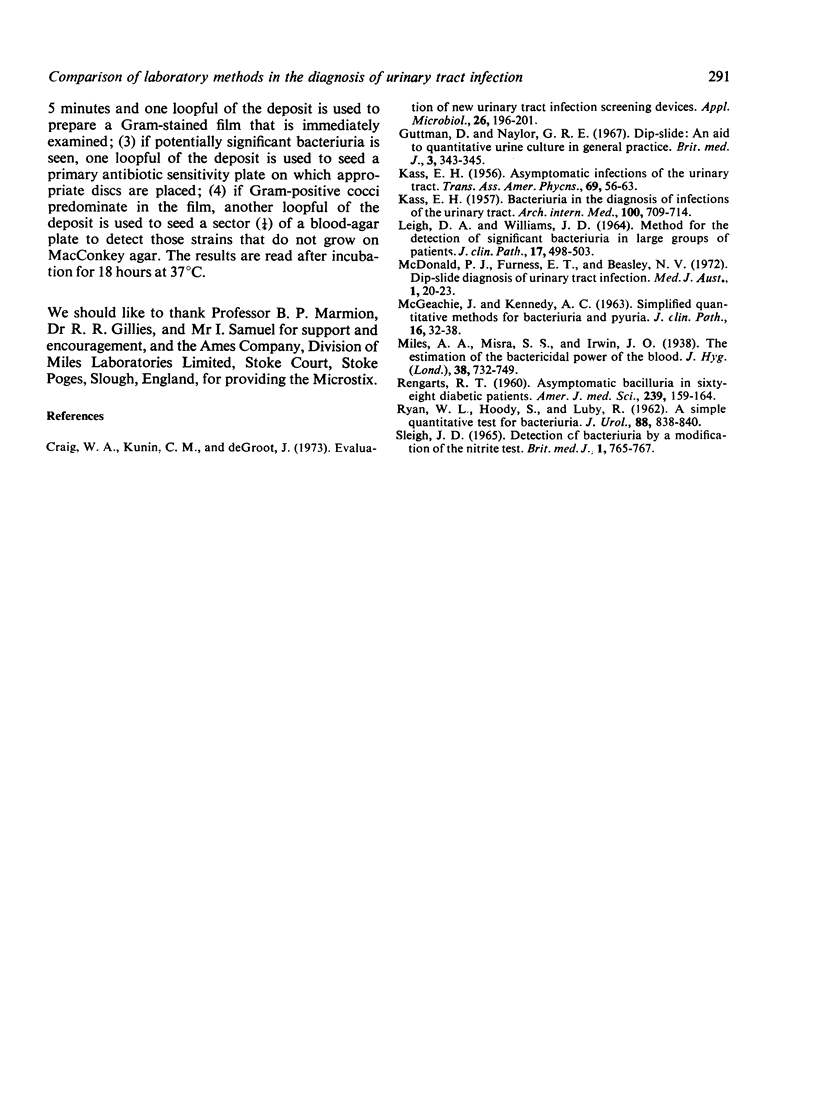
Selected References
These references are in PubMed. This may not be the complete list of references from this article.
- Craig W. A., Kunin C. M., DeGroot J. Evaluation of new urinary tract infection screening devices. Appl Microbiol. 1973 Aug;26(2):196–201. doi: 10.1128/am.26.2.196-201.1973. [DOI] [PMC free article] [PubMed] [Google Scholar]
- Guttmann D., Naylor G. R. Dip-slide: an aid to quantitative urine culture in general practice. Br Med J. 1967 Aug 5;3(5561):343–345. doi: 10.1136/bmj.3.5561.343. [DOI] [PMC free article] [PubMed] [Google Scholar]
- KASS E. H. Asymptomatic infections of the urinary tract. Trans Assoc Am Physicians. 1956;69:56–64. [PubMed] [Google Scholar]
- KASS E. H. Bacteriuria and the diagnosis of infections of the urinary tract; with observations on the use of methionine as a urinary antiseptic. AMA Arch Intern Med. 1957 Nov;100(5):709–714. doi: 10.1001/archinte.1957.00260110025004. [DOI] [PubMed] [Google Scholar]
- LEIGH D. A., WILLIAMS J. D. METHOD FOR THE DETECTION OF SIGNIFICANT BACTERIURIA IN LARGE GROUPS OF PATIENTS. J Clin Pathol. 1964 Sep;17:498–503. doi: 10.1136/jcp.17.5.498. [DOI] [PMC free article] [PubMed] [Google Scholar]
- McDonald P. J., Furness E. T., Beasley N. V. Dip-slide diagnosis of urinary tract infection. Med J Aust. 1972 Jan 1;1(1):20–23. doi: 10.5694/j.1326-5377.1972.tb46676.x. [DOI] [PubMed] [Google Scholar]
- McGeachie J., Kennedy A. C. Simplified quantitative methods for bacteriuria and pyuria. J Clin Pathol. 1963 Jan;16(1):32–38. doi: 10.1136/jcp.16.1.32. [DOI] [PMC free article] [PubMed] [Google Scholar]
- RENGARTS R. Asymptomatic bacilluria in sixty-eight diabetic patients. Am J Med Sci. 1960 Feb;239:159–164. doi: 10.1097/00000441-196002000-00006. [DOI] [PubMed] [Google Scholar]
- RYAN W. L., HOODY S., LUBY R. A simple quantitative test for bacteriuria. J Urol. 1962 Dec;88:838–840. doi: 10.1016/S0022-5347(17)64892-4. [DOI] [PubMed] [Google Scholar]
- SLEIGH J. D. DETECTION OF BACTERIURIA BY A MODIFICATION OF THE NITRITE TEST. Br Med J. 1965 Mar 20;1(5437):765–767. doi: 10.1136/bmj.1.5437.765. [DOI] [PMC free article] [PubMed] [Google Scholar]


